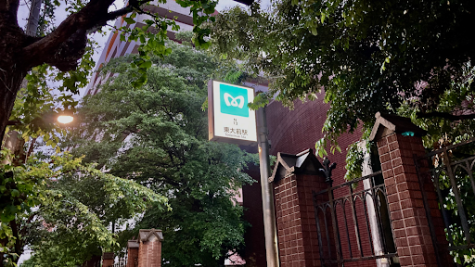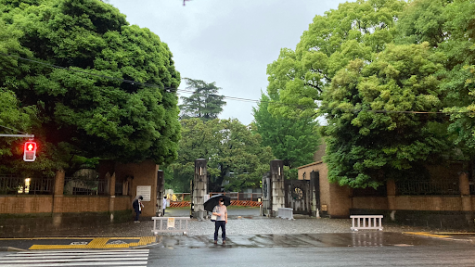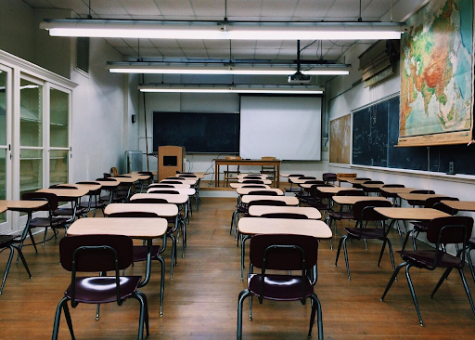May 19, 2022
The injured high school students were two among the 3,702 people taking the Common Test for University Admissions that day at the Hongo Campus of the University of Tokyo. The Test is an annual standardised exam held in mid-January, which plays a crucial role in the Japanese university application process. For university applicants applying through the most standard process of sitting an entrance exam, it is a requirement in all public and many private universities to submit their scores. According to the information released by the National Center for University Entrance Examinations, the Common Test for University Admissions this year was held from 15 to 16 January in 677 test centres all over Japan, with about 82,000 registered test takers.

Earlier that day before the attack, the attacker had also attempted to start a fire at Todaimae station on the Namboku line of Tokyo Metro. It was also revealed that in addition to the cooking knife used in the attack, the attacker was in possession of another knife, a saw, three litres of flammable liquid, and a firelighter at the time of the attack.
According to coverage by multiple news agencies, the attacker committed the act out of his personal struggles in academics. Jiji Press reported that the attacker was an academically diligent student, and that despite his almost-obsessive wish to study medicine at the University of Tokyo, his academic performance had started to fall since last year.
Hailed as the best university in the nation, the University of Tokyo is one of the oldest and most prestigious universities in Japan. Admission to the school is extremely competitive, and only students with excelling academic performance are accepted. As of April 2022, Benesse reports that its hensachi (deviation score) is set between 70 to 77, indicating that students belonging in approximately the 98 to 99 percentile can pass the entrance exam. Hensachi (deviation score) is a unique statistical system used in the Japanese education scene to predict a student’s likelihood of being admitted to a particular university.

In general, the Japanese university admissions and the competition that precede is very intense and fierce. Most high school students start preparing for their entrance exams before the end of their second year in senior high school (the equivalent of Grade 11 in the US), and many attend juku (cram school) or hire private tutors to assist their preparation. Some students even eat dinner at their juku to obtain more study hours.
Such lifestyle is also not uncommon among younger students; junior high school students who sit an entrance exam to get into senior high school and many elementary school students who are planning on applying to a private junior high school also spend a tremendous amount of their time studying at jukus and at home.
For most students who attend jukus regularly, their ultimate goal is to pass an entrance exam in the future, regardless of whether that is for elementary school, junior high school, senior high school, or university. Some people start taking classes as early as when they are two or three years old to prepare for kindergarten entrance exams, although the content of it is less academic in comparison to what school-age students study.
One reason for this high level of commitment in academic achievement is the Japanese society’s obsession with having an impressive educational background. While many students do apply to schools that match their needs well, some students’ and parents’ choices of schools are oriented heavily on the school brand.
“Get into a good school and get into a good company.”
This phrase, or variants of the same meaning, has been a mantra going around the Japanese education scene for the longest time. “Good,” like many other adjectives in the English language, is a subjective term. In this context, the word suggests that the institution is respected and well-regarded within society. Until quite recently, people believed that studying at a good university and getting employed at a good company would grant one happiness.
The logic for this mantra is that getting into a well-respected school will increase the chances of getting employed at a well-respected company, which will almost guarantee a lifetime employment and stability, bringing one happiness, or at least an interpretation of it.
As fallacious as it seems, the logic is not completely unreasonable.
In December 2021, Mynavi Corporation, a recruitment agency popular among university students sent an email with the subject “<No. 1> Below Daitoa ⑨ (<第1>大東亜以下⑨)” to approximately 16,000 students residing in the Greater Tokyo Area about a major supermarket chain recruiting interns. The company came under fire for the phrase “Below Daitoa”, Daitoa being a term used to abbreviate and group together Daito Bunka University, Tokai University, and Asia University. The term is one of the several abbreviated university groupings based on their academic level and prestige, similar to phrases like Ivy League and Oxbridge. The use of the word “below” led to people suspecting Mynavi Corporation of using gakureki filter (学歴フィルター, educational background filter), segregating job-hunting students based on the universities they attend. Mynavi Corporation denied these allegations.
The notion of gakureki filter is not something new. An online article from The Nikkei published in November 2012 featured the topic thoroughly, pointing out an upward trend in the number of school-specific recruitment visits by businesses at the time. According to a December 2021 article on Shukatsu Navi, an information website for job-hunting students provided by the Asahi Shimbun, reports of cases that indicate gakureki filter-ing surface on social media from time to time. In one example, an online reservation site for a company’s recruitment seminar showed that the slot for the seminar was full for a student. However, students from other universities like the University of Tokyo were still able to apply and secure a slot.
Until now, the Japanese workforce was predominantly built on top of a custom of lifetime employment, dating back to the post-WWII times. The convention was that if a person is employed by one company, they will be employed there until retirement, unless the person is found guilty of serious misconduct or the company goes bankrupt. In some people’s perspectives, getting employed was the goal line: once they crossed it, they had lifetime stability. This was one of the preconditions for the “get into a good school…” mantra.
However, this precondition may not ring true in the current Japanese society.
In May 2019, Akio Toyoda, the president of the Toyota Motor Corporation gained public attention when he stated “I think we may have started to enter a phase where maintaining lifetime employment is quite difficult” at a press conference. A month earlier, Hiroaki Nakanishi, the then-chairman of the Keidanren (Japan Business Federation) and a former chairman of Hitachi Ltd. had also said “I think we can’t protect such a thing as lifetime employment anymore.”
In recent years, Ristora (リストラ), which is the downsizing of the workforce for a company, has become a common practice for companies suffering from financial hardships. With the COVID-19 pandemic and the change in the economy that consequently followed, many companies, especially in the apparel, travel, and tourism industry, are reducing the number of employees, Nikkei reports.
In addition to these changes in the economic outlook, the Japanese workforce still suffers from the presence of Burakku Kigyo (ブラック企業), or black companies. These are companies that exploit their employees under illegal working conditions, including unpaid excessive overtime and harassment.
Furthermore, the mindset among the workers has started to change as well.
According to a financial report made by the Japanese Cabinet Office for the 2017-2018 fiscal year, the number of people changing occupations was on a gradual increasing trend from around 2010. In a more recent statistics released by Mynavi Corporation, the percentage of changing occupations was on an upward trend from 2016 to 2019, while it saw a decrease in 2020. Moreover, they reported that almost 70% of the people who changed occupations in 2020 saw the transition as being a positive change.
Despite this changing atmosphere, some people place significant value on academic excellence, sometimes to an extreme.

In 2018, a 31 year old nurse in Shiga prefecture was arrested for the murder of her mother and for the postmortem mutilation and disposal of the body. According to 47NEWS, the defendant was coerced by her mother to apply for a medicine major at a public university in 2005, and when she was rejected, the mother controlled and restricted every facet of the defendant’s life, all while continuing to make her apply to the same school.
In 2019, a man was sentenced to 13 years imprisonment for stabbing his 12 year old son. The Asahi Shimbun reported that the son at the time was studying in preparation for an entrance exam to a private junior high school, and that the father used to raise his voice and hit his son while helping him study. About half a year before the murder, the father started using knives to threaten his son, just to “change his son’s attidue towards studying for the entrance exam”. The father claimed that he did not intend to kill his son in the trial.
These are just two extreme examples of what is called Kyoiku gyakutai in Japan, or educational abuse. This new form of child abuse refers to parents and guardians compelling their children to study beyond their capacities and/or reasonable limits. According to the Chunichi Shimbun, a report on a case of educational abuse was made to the Japanese Society for Prevention of Child Abuse and Neglect was made in 2011, implying that it is not a completely new concept.
In 2006, a senior high school student from Nara prefecture set fire on his house, killing his stepmother and younger siblings. He was a victim of educational abuse by his father, a doctor, who verbally and physically attacked him when his grades did not meet his expectations.
In 1980, a juku student killed his parents using a metal bat. The student was reportedly in conflict with his father, a graduate of the University of Tokyo, over the student’s university applications.

An article from June 2021 on Tokyo Shimbun points out that some victims of educational abuse still suffer from its trauma, even after decades have passed. People in their mid-30s and 40s have reported that they are still affected by the memories of being abused. For a 27-year old woman, her father shouted and forced her to study past midnight when she was five, consequently leading her to identify studying as something tortuous.
These parents who abuse their children may seem diabolical. However, Setsuko Tsuboi, a lawyer, points out that many parents don’t realise that what they are doing to their children is a form of abuse. In an interview published in November 2019, she told reporters from Bengoshi.com News that “parents say that it was all for raising their child. They aren’t aware that they’re abusing their child. It’s obviously a physical or psychological abuse and yet they don’t notice that.”
Tsuboi currently is on the board of directors of Carillon Children Center, a shelter for young people that she co-founded with others in 2004. In the same interview, Tsuboi discussed several instances of educational abuse that the shelter has dealt with over the years, including that of a mother who was impelling her daughter to aim for the University of Tokyo against her wishes, using verbal and physical abuse. When the shelter informed the mother about the situation, the mother was “extremely shocked.” “She did it all out of genuinely wanting the best for her daughter,” Tsuboi told the interviewee.
In an interview with Asahi Shimbun, Toshimasa Ota, a journalist specialising in education characterised parents that abuse children for education in three categories: parents with very high academic achievement, parents with low academic achievement, and a hybrid of the two. Ota comments that the first category, parents with very high academic achievements, tend to put high academic expectations on their children, out of the belief that having high academic achievements is the only route to a successful life. On the other hand, parents with low academic achievements have the tendency to overestimate the role that high academic achievements play in one’s life, out of their own experience of having lower academic achievements. The final category, the hybrid category, are parents who have relatively high academic achievements. However, they feel discontent with their achievements, often out of the experience of getting rejected by their “dream school,” and are prone to direct that dissatisfaction towards their children.
What complicates the problem further, Ota points out, is that people have different capacities in terms of studying; some can handle hours of studying and find it tolerable. Others find an hour of it excruciating.
The aforementioned June 2021 article from Tokyo Shimbun also quotes some parents as well: “I do [educational abuse] everyday. I don’t mean to do it, but I can’t change my way of thinking. […] It’s not even that I think that way – I am that way.”
Another parent commented “[e]ducational abuse, I do it. Society makes us compete, right? […] I always had good grades, and I want my child to be like that too. It’s not like there isn’t the potential, so I end up putting expectations. […] I want to educate my child really strictly, even if people tell me that it’s educational abuse, increase their stress tolerance, and throw them into society.”
At the heart of it all is genuine aspiration for the better, and to some extent, pursuit of academic prestige is arguably universal. However, whether it be from parents, students, or another external source, it’s quite obvious that the Japanese education scene has a strong attachment to high academic achievement, sometimes to an excessive degree.
The final question is, how relevant is this approach in the rapidly changing society of today? How important is academic prestige in this new age?
It just may be that it is time for the Japanese education scene to adapt.